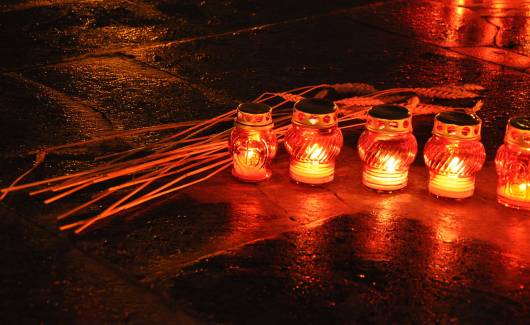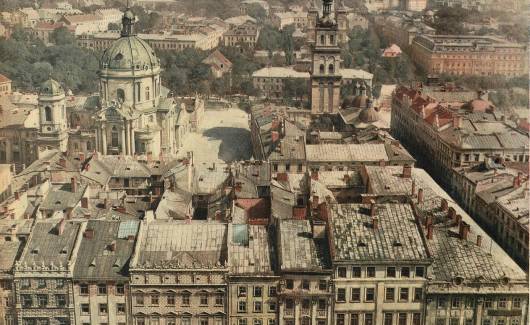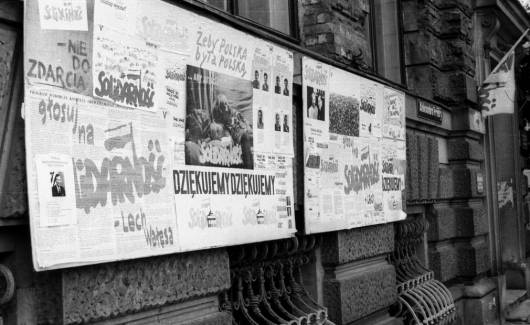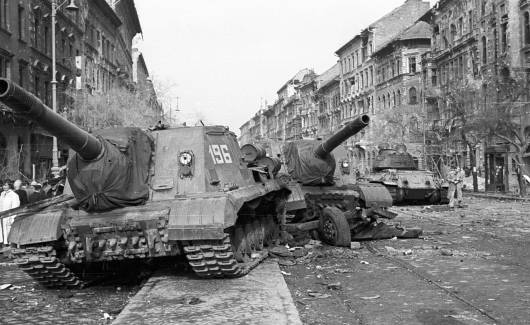Verbindendes Gedächtnis im 20. Jahrhundert? Das „Europäische Netzwerk Erinnerung und Solidarität“ und die Brüche in der Erinnerungslandschaft des alten Kontinents
Die Beweggründe, sich zu erinnern, sind so unterschiedlich wie die Personen und Konstellationen, die Erinnerungen anstoßen, konservieren und weitergeben. Bei aller Unterschiedlichkeit von Erinnerungsformen ist es in der Regel der Bezugsrahmen einer Gemeinschaft oder eines Landes, innerhalb dessen Erfahrungen ausgetauscht und Erinnerungen gepflegt werden. Das kollektive Gedächtnis selektiert, bewahrt und übermittelt Ereignisse und Vorgänge, die in Form von Erbe und Tradition vor allem national konnotiert werden.
Das 19. Jahrhundert stand unter dem Signum nationaler Erweckungsbewegungen, die ihren libertären Gehalt in der zweiten Hälfte des Jahrhunderts sukzessive zu Lasten eines aggressiven, häufig xenophoben Konservatismus einbüßten, was Heinrich August Winkler treffend mit dem Wandel vom „linken zum rechten Nationalismus“ umschreibt.[1] Für das 20. Jahrhundert ist eine Dynamisierung von Ereignissen, die beschleunigte Erosion traditioneller Werte und die Totalisierung des Nationalen feststellbar, wovon die europäische Staatenordnung nachhaltig erschüttert wurde. Zu Synonymen für das Neue und Unermessliche des 20. Jahrhunderts wurden Begriffe wie ‚Gewalt‘, ‚totaler Krieg‘, ‚Holocaust‘, ‚Nationalsozialismus‘, ‚Kommunismus‘ und ‚Vertreibungen‘, um nur einige zu nennen.
Das Neue des 20. Jahrhunderts war nicht das Hegemonialstreben der Großmächte an sich, sondern die zerstörerische Wucht der bolschewistischen Revolution mit ihren globalen Weiterungen und die Einzigartigkeit des vom nationalsozialistischen Deutschland entfachten und total geführten Zweiten Weltkriegs. Anders als in früheren Jahrhunderten brachte das europäische Staatensystem die Kraft zur eigenen Abwehr des nunmehr rassistischen Eroberungswahns und zur Erreichung eines selbstbestimmten europäischen Gleichgewichts nicht mehr auf. Die äußere Befreiung vom Nationalsozialismus kam aus dem asiatischen Teil der Sowjetunion und von jenseits des Atlantiks. Der Preis dafür war die Akzeptanz der in Jalta ausgehandelten und in Potsdam notifizierten Teilung Europas, wobei deren Konsequenzen für die Staaten östlich der Elbe weitaus gravierender und schmerzhafter als für jene im Westen waren: der Verlust von Freiheit, sowohl die Beschneidung der staatlichen Souveränität wie die von Lebenschancen einzelner Menschen, durch eine nach sowjetischem Muster errichtete Staatenordnung.[2]
*
In Westeuropa stand die Entwicklung unter anderen Vorzeichen. Hier nahmen die Vereinigten Staaten von Amerika die Vorbildrolle ein; die parlamentarisch-liberale Demokratie setzte sich in der Mehrzahl der Länder durch, was nicht zuletzt auf die lehrreiche Erfahrung mit den Gefährdungen der Demokratie in der Zwischenkriegszeit und auch die einprägsame Negativkontrastierung durch den diktatorischen „Ostblock“ zurückzuführen war. Die zwanzigjährige Hochkonjunktur der Weltwirtschaft in der Nachkriegszeit tat ein Übriges, um Stabilität und Wohlstand im Westen zu generieren, was wiederum einer allmählichen lebensweltlichen Entfremdung vom östlichen Teil Europas Vorschub leistete. Die erfolgreiche ökonomische und politische Integration Westeuropas blieb nicht ohne Folgen auf die inhaltliche Füllung der Vorstellungen, welche Eliten und Gesellschaften von Europa hegten.[3]
Wenn von Europa die Rede war, so war in Paris, Bonn oder Brüssel seit den 1960er Jahren selbstredend Westeuropa gemeint. Mehr noch: die Region zwischen Rhein, Maas und Mosel als administratives und wirtschaftliches Zentrum der Europäischen Gemeinschaft machte bereits Skandinavien und das Mittelmeer zur Peripherie. Das östliche Europa dagegen figurierte in der Vorstellungswelt der meisten Westeuropäer als grauer Einheitsblock oder verschwand aus deren Bewusstsein. Die Westeuropäer hielten sich zusehends für die Vertreter des ‚eigentlichen‘ Europa, wobei ihnen die Absenz der anderen Hälfte bald nicht mehr auffiel. Nur Wenige haben vor dem Fall der Mauer das Fehlen des Ostens in der westlichen Wahrnehmung thematisiert.[4]
Dass die Spaltung des Kontinents in Ost und West, in totalitäre/autoritäre und demokratische Systeme kein ‚natürliches Ergebnis‘ des Zweiten Weltkriegs war, davon zeugen die Föderationsprojekte, die Widerstandsgruppen quer über Europa für die Zeit nach dem erhofften Sieg über das Dritte Reich entwickelten. Ernst Friedländer spricht gar von der „Geburt des europäischen Föderalismus aus dem Geist des Widerstandes“.[5] Die Lehre, die aus dem eklatanten Versagen des Völkerbundes und dem verheerenden Nationalismus, insbesondere dem Nationalsozialismus, zu ziehen war, hieß europäische Einigung. Wichtige Dokumente dieses Erneuerungswillens wie das „Manifest von Buchenwald“ trugen selbstverständlich die Unterschriften von West- und Osteuropäern. Als im Mai 1948 über 600 Vertreter europäischer Nationen in Den Haag zum „Europa-Kongress“ zusammenkamen, fehlten vor dem Tagungsgebäude nicht die Fahnen der osteuropäischen Staaten. Allerdings wurden diese Länder damals nur noch durch Exilanten vertreten. Im Oktober 1948 auf dem Weltkongress der Intellektuellen für den Frieden in Breslau/Wrocław waren westliche Vertreter zwar anwesend,[6] aber die sowjetische Regie arbeitete auf die ideologische Spaltung Europas hin.[7]
Die östliche Hälfte des Kontinents insgesamt wie der geistige Anteil von Osteuropäern an europäischen Föderationsplänen drohten fortan in Vergessenheit zu geraten und wären wohl gänzlich aus dem Blickfeld der westeuropäischen Öffentlichkeit verschwunden, hätte es nicht Exilanten gegeben, die in Zeiten des Kalten Krieges versuchten, individuell und durch eigens gegründete Zeitschriften und Zirkel die östlichen Erfahrungswelten nicht dem Vergessen anheimfallen zu lassen. Zu den Zentren der Exilliteratur und -publizistik gehörten für die Tschechoslowakei der in Toronto ansässige Verlag „Sixty-Eight Publishers Corporation“ und die „Freie Presse Agentur“ in Wurmannsquick,[8] für Ungarn die letztlich in München herausgegebenen Zeitschriften Új Látóhatar und Nemzetőr sowie die politisch maßgebende, in deutsch erscheinende Europäische Rundschau aus Wien.[9] Für Polen erlangte die in Paris erscheinende Zeitschrift Kultura einen beträchtlichen Einfluss unter den literarischen wie politischen Emigranten und inspirierte die intellektuellen Diskurse und das oppositionelle Milieu im Lande.[10]
Gegen die machtpolitische Zweiteilung Europas und, gravierender noch, gegen deren Gewöhnung und kulturelle Akzeptanz unter Westeuropäern schrieben Dutzende von ostmitteleuropäischen Intellektuellen und Dissidenten an. Es waren der Exiltscheche Milan Kundera mit seinem berühmten Essay Un Occident kidnappé oder Die Tragödie Zentraleuropas und das Buch Antipolitik des ungarischen Soziologen György Konrád, die die Mitteleuropa-Debatte Mitte der 1980er Jahre auslösten. Kundera konstatierte nach 1945 eine Verschiebung der alten Grenze zwischen Katholizismus und Orthodoxie um einige hundert Kilometer nach Westen, sodass das geographische Zentrum Europas nunmehr kulturell im Westen und politisch im Osten lag.[11] Konrád betrachtete die „Antipolitik“ als Mittel, um sich dieser willkürlichen Teilung zu widersetzen. Gesellschaften, die dem Druck eines totalitären Staates ausgesetzt sind, müssen seiner Meinung nach lernen, ihr eigenes Leben zu führen, indem sie zahlreiche Formen der Zusammenarbeit und des Sich-Vereinigens entwickeln und auf diese Weise Schritt für Schritt eine Grenzen überschreitende bürgerliche Gesellschaft aufbauen.[12]
Während ungarische und tschechoslowakische Autoren – mit dem steten Bezug auf Russland bzw. die Sowjetunion – zur Debatte über ihr Selbstverständnis und den Grad ihrer Zivilisiertheit neigten, war die polnische Diskussion über Mitteleuropa stärker von Themen wie dem Verhältnis zu den beiden deutschen Staaten und zur Sowjetunion geprägt. Die geographische Lage des Landes legte geradezu eine Klärung des Verhältnisses Polens zu seinen Nachbarn nahe.[13] Mit der Mitteleuropa-Debatte machten die Intellektuellen aus dem „Ostblock“ auf die Wahrnehmungsdefizite in Westeuropa aufmerksam und brachten ihre europäische Identität zur Geltung.[14]
Die wohl nachhaltigste Wirkung besaß die über vierzigjährige politische Teilung des Kontinents in Ost und West, in autoritäre/totalitäre und demokratische Systeme. Der Zufall, in die eine oder andere Staatsform geboren oder geraten zu sein, hatte für die dort Lebenden erhebliche, bisweilen lebensbedrohliche Konsequenzen, wenn es galt, Wahrheit und Lüge zu unterscheiden und dieses auch angstfrei aussprechen zu wollen. Der polnische Dichter Czesław Miłosz flüchtete 1951 in den Westen und schilderte in seinem zwei Jahre später erschienenen Essay Verführtes Denken das Verhalten von Intellektuellen im Stalinismus, das von Angst, Unterwürfigkeit, aber auch Loyalität gegenüber den Machthabern geprägt war. Karl Jaspers würdigte diese Bemühungen des späteren Literaturnobelpreisträgers wie folgt: „Miłosz schreibt nicht wie ein bekehrter Kommunist, man merkt bei ihm nichts von jenem aggressiven Fanatismus der Freiheit, der in Gebärde, Ton und Handeln wie ein umgekehrter Totalitarismus wirkt. Er schreibt auch nicht als oppositioneller Emigrant, der praktisch an Umsturz und Rückkehr denkt. Er spricht als der erschütterte Mensch, der mit dem Willen zur Gerechtigkeit, zur unverstellten Wahrheit durch die Analyse des im Terror Geschehenden zugleich sich selber zeigt.“[15]
Miłosz’ Kenntnisse der östlichen und westlichen Welt, seine Sensibilität wie auch sein Einfühlungsvermögen hoben ihn damals von den Herrschaftsunterworfenen im Osten, aber auch nicht wenigen Intellektuellen im Westen ab, die der Sowjetunion die Niederwerfung des Nationalsozialismus zugutehielten und den Januskopf des Kommunismus mit seiner Immanenz von Gewalt und ideologischer Vereinnahmung nicht sahen bzw. nicht sehen wollten. Die von Miłosz in seinem späteren Schaffen unter Beweis gestellte Fähigkeit zur Einsicht und Empathie war auch nach dem Ende der Blockkonfrontation 1989 keineswegs selbstverständlich. Vielmehr ist eine geteilte Erinnerung zwischen Ost- und Westeuropa zu beobachten, nur dass nunmehr die Trennungslinie durch die ökonomisch und politisch erweiterte Europäische Union verläuft.[16]
*
Die Aktualität und Brisanz der geteilten europäischen Erinnerung ist zu Beginn des 21. Jahrhunderts im Zuge der Erweiterung der Europäischen Union sichtbar geworden. Im Folgenden soll versucht werden, am Beispiel des Umgangs mit dem Nationalsozialismus und Kommunismus, speziell am Thema Vertreibungen und Zwangsmigrationen, die Unwägbarkeiten und Brüche innerhalb der europäischen Erinnerungslandschaft zu verdeutlichen.
Vertreibungserfahrungen stehen im europäischen Kontext des 20. Jahrhunderts, aber sie werden nicht als europäische, sondern in der Regel als nationale erinnert. Die Erinnerung an Flucht und Vertreibung folgte je nach Land und Generation eigenen Bildern, die wiederum von offiziellen Stellen unterstützt oder ausgeblendet werden konnten und daher erheblichen Veränderungen unterlagen. Dies verwundert nicht, schließlich wird zunächst daran erinnert, was man selbst erlebt, gesehen oder gehört hat. Die Perspektive der unmittelbaren Erlebniswelt kann dazu führen, dass die großen historischen Vorgänge, die für die Nachwelt zusammenhängen, von der Erlebnisgeneration separiert wahrgenommen werden. Individuelle Erinnerung verläuft nicht selten quer zu den großen historischen Ereignissen und ist dennoch – oder gerade deshalb – so wichtig. Sie speichert Dialekte, Landschaftsbilder, Gewohnheiten, ja selbst Gerüche und unterliegt zugleich im Laufe von Jahren Veränderungen. Ängste und Verunsicherungen können individuelle Erinnerung ebenso beeinflussen wie die Fähigkeit zur Selbstreflexion, ja sogar zur Selbstkorrektur. Die individuelle Erinnerung an Vertreibung ist wertvoll durch ihre Authentizität und zugleich anfechtbar durch ihre Emotionalität. Diese Spannung ist nicht auflösbar, aber doch beherrschbar, indem Menschenschicksale anderer Länder mit Empathie wahrgenommen werden und sich die Erkenntnis durchsetzt, dass die Umsiedlungs- und Vertreibungserfahrung für den Einzelnen – unabhängig davon, ob es sich dabei um Polen, Ukrainer oder Deutsche handelte – gleichermaßen schmerzhaft sein mochte. Das kollektive Gedächtnis über Vertreibung, welches sekundäre, nicht unmittelbar erfahrungsgesättigte Erinnerung mit einschließt, darf sich dem Bemühen um moralische Empfindsamkeit gegenüber den Untaten der eigenen Landsleute und der Reflexion über Ursachen und Wirkung von Vertreibungen nicht entziehen. Erst dann hebt sich kollektives Gedächtnis von einer bloßen Addition von Einzelerfahrungen ab und wird von der individuellen Erinnerung tatsächlich unterscheidbar.
Diese Unterscheidbarkeit basiert nicht zuletzt auf dem Vetorecht der je persönlichen Erinnerung, die sich gegen jede Vereinnahmung in ein Erinnerungskollektiv sperrt. Nach Reinhart Koselleck gehört es „zur oft beschworenen und ebenso oft vergeblich beschworenen Würde des Menschen, dass er einen Anspruch auf seine eigene Erinnerung hat“. Bei der inflationär gewordenen Redeweise von der „kollektiven Erinnerung“ rät Koselleck zur Behutsamkeit: „Es gibt keine kollektive Erinnerung, wohl aber kollektive Bedingungen möglicher Erinnerungen. So wie es immer überindividuelle Bedingungen und Voraussetzungen der je eigenen Erfahrungen gibt, so gibt es auch soziale, mentale, religiöse, politische, konfessionelle Bedingungen – nationale natürlich – möglicher Erinnerungen. Sie wirken dann als Schleusen, durch die hindurch die persönlichen Erfahrungen gefiltert werden, so dass sich klar unterscheidbare Erinnerungen festsetzen. Die politischen, sozialen, konfessionellen oder sonstigen Voraussetzungen begrenzen also die Erinnerungen und geben sie zugleich frei.“[17]
Angesichts der Schwierigkeiten der geeigneten Form von Erinnerung und deren Korrektiv stellt sich die Frage: Welche Rolle kann die Geschichtswissenschaft bei der Vergegenwärtigung von historischen Ereignissen spielen? Hans Günter Hockerts hat die begriffliche Trias „Primärerfahrung, Erinnerungskultur und Geschichtswissenschaft“ als typologisierenden Zugang zur Zeitgeschichte angeregt. Dabei meint Primärerfahrung die selbst erlebte Vergangenheit, Erinnerungskultur die Gesamtheit eines nicht spezifisch wissenschaftlichen Gebrauchs von Geschichte in der Öffentlichkeit mit unterschiedlichsten Mitteln und zu verschiedenen Zwecken. Dass Geschichte instrumentell eingesetzt wird und die Bedürfnisse des ‚Infotainment‘ befriedigt, ist insbesondere bei der Zeitgeschichte zu beobachten. Fachwissenschaftliche Interventionen und Korrekturbemühungen stoßen hier schnell an Grenzen.[18]
Konstitutiv für die Wissenschaft ist, dass sie Standards eines „systematischen, regelhaften und nachprüfbaren Wissenserwerbs“ entwickelt hat. Sie ist sich auch der Standortgebundenheit historischer Erkenntnis bewusst und legt Prämissen mehr oder minder explizit offen. Strittig waren und bleiben dagegen Einordnungen, Gewichtungen und Verknüpfungen, zumal sie sich nur selten mit fachwissenschaftlichen Kriterien entscheiden lassen. Hier hat nicht nur die Multiperspektivität ihren legitimen Platz. Hier kann es auch nicht um die regelhaft gewünschte „Objektivität“ gehen, weil es keinen Fixpunkt für deren Überprüfbarkeit gibt. Wohl aber muss intersubjektive Überprüfbarkeit im wissenschaftlichen Diskurs als Kontrolle und Korrektur dienen. „Erinnerungsvielfalt heißt nicht, alles für erlaubt zu erklären. Die Fachkompetenz kann dazu beitragen, dass Pluralität nicht zur Beliebigkeit verkommt“ und Legenden entschieden entgegengetreten wird.[19]
Auch wenn methodische Zweifel angebracht sind, ob die Charakterisierung des europäischen 20. Jahrhunderts als ‚das Jahrhundert der Vertreibungen‘ tragfähig ist, kann zumindest die quantitative Dichte an erzwungenen Migrationen in der ersten Hälfte des vergangenen Jahrhunderts kaum geleugnet werden. Als Beispiele lassen sich unter anderem die Vertreibung der Armenier aus der Türkei 1915, der griechisch-türkische „Bevölkerungsaustausch“ von 1922, die Vertreibung von Polen durch den deutschen Aggressor 1939, die Deportation von Tschetschenen und Inguschen 1944 und die Vertreibung von Deutschen aus dem östlichen Europa 1945–1948 nennen. Allen diesen Zwangsmigrationen war gemeinsam, dass sie sich gegen Ethnien richteten, die mit Hilfe der Mobilisierung negativer nationaler Empfindungen und gezielter Propagandakampagnen als fremd und gefährlich kontrastiert werden konnten. Dabei wurde das vermeintliche oder tatsächliche illoyale Verhalten der betreffenden Bevölkerungsgruppe gegenüber dem Staat oder gegenüber anderen Bevölkerungsgruppen zum Anlass für jene Zwangsmigrationen genommen und/oder diese politisch damit gerechtfertigt. Die Vertreibungsvorgänge selbst waren in der Regel mit kollektiver Entrechtung, massiver Gewalt und individueller Entwürdigung verbunden und unterlagen in ihrem Verlauf bisweilen einer inhumanen Dynamik, die über das, was die politischen Entscheidungsträger mitunter als „humanen und geregelten Bevölkerungstransfer“ definierten, bei weitem und zu Lasten der Betroffenen hinausging.[20]
Neben den Gemeinsamkeiten gibt es elementare Unterschiede zwischen den genannten Zwangsmigrationen. Sie konnten vor allem ethnisch, politisch, ideologisch oder rassistisch motiviert sein, sich nach dem Inneren eines Landes richten oder nach außen wirken. In den ersten drei Jahrzehnten des 20. Jahrhunderts geschahen Vertreibungen auf dem Kontinent vom Inneren eines Landes aus und wurden wie z. B. der griechisch-türkische Konflikt mit dem Vertrag von Lausanne im Jahre 1923 völkerrechtlich zumindest nachträglich sanktioniert. Diese Konfliktregelung diente im vorliegenden Fall der politischen Entschärfung der griechisch-türkischen Auseinandersetzungen, auch wenn diese Art der Übereinkunft auf dem Rücken der Betroffenen ausgetragen wurde, Heimatverlust mit sich brachte sowie Traumatisierte und Tote hinterließ.
Mit dem Zweiten Weltkrieg veränderte sich der Charakter von Vertreibungen erheblich. Die Nationalsozialisten benutzten nach dem Überfall auf Polen Vertreibungen erstmals als Mittel einer hemmungslosen Eroberungspolitik, indem sie Bevölkerungsgruppen wie die sogenannten Volksdeutschen ungefragt auf der Landkarte verschoben, Millionen von Polen, Russen, Ukrainern und Tschechen ihrer Heimat beraubten und Juden systematisch ermordeten. Ohne den Nationalsozialismus mit seiner brachialen Umsiedlungs- und Ausrottungspolitik im östlichen Europa hätte es die Vertreibung der Deutschen nach 1945 nicht gegeben. NS-Deutschland war es, das Vertreibungen zur Durchsetzung seiner verheerenden Lebensraumpolitik durchführte und damit ein fatales Verhaltensmuster in Europa etablierte, das insbesondere Stalin ausnutzte.[21]
Während die Nationalsozialisten aus rassistischen und siedlungspolitischen Gründen vertrieben und mordeten, taten es die Bolschewiki aus ideologischen und innenpolitischen Gründen. Was das „Dritte Reich“ und die Sowjetunion teilten, waren ihre imperialen Ansprüche und utopischen Reinheitsphantasien, wie Jörg Baberowski feststellt. Die Sowjetunion war ein Vielvölkerreich, bevor die Bolschewiki damit begannen, es nach ihren Vorstellungen neu zu ordnen. Das „Dritte Reich“ war ein Nationalstaat, der sich durch kriegerische Expansion in ein Vielvölkerimperium verwandelte. „Es eignete sich jene Ambivalenz erst an, die seine politischen Führer nicht ertragen konnten. Beide Regime, Nationalsozialisten wie Bolschewiki potenzierten das Chaos, das sie mit ihren Ordnungsentwürfen beseitigen wollten. Denn als sie sich über die vertrauten Ordnungen hinausbegaben, um fremde Welten zu erobern und zu zerstören, zeigten sich ihnen nicht nur fremde Verhältnisse, sondern existentielle Bedrohungen ihrer Gesellschaftsentwürfe. Deshalb lernten die Eroberer die Welt jenseits der vertrauten Ordnungen nur als feindlichen Gegenentwurf kennen.“[22]
Nationalsozialisten und Bolschewiki hatten den Ersten Weltkrieg und den folgenden Bürgerkrieg vor allem als Kämpfe erlebt, die sich in einem multiethnischen und gewalttätigen Kontext ereigneten. Während die einen „Barbaren“ und „Untermenschen“ ausmachten, sahen die anderen „Verräter“ und „Feinde“, die sich in Rassen und Ethnien verkörperten. Diese Erfahrungen waren wesentlich für die Herausbildung der nationalsozialistischen und bolschewistischen Ordnungsprogramme und Säuberungsphantasien.[23]
„Das Besatzungsregime der Nationalsozialisten in der Ukraine, in Weißrußland und im Baltikum veränderte seit 1941 nicht nur die ethnische Landkarte der Sowjetunion. Es veränderte auch die Selbstwahrnehmung der betroffenen ethnischen Gruppen und das Denken der Bolschewiki über das Imperium. Juden waren jetzt nur noch Juden, Deutsche nur noch Deutsche und Tschetschenen nur noch Tschetschenen. Was sie sonst noch waren, verlor nach den Erfahrungen des Zweiten Weltkrieges für alle Seiten an Bedeutung. Während des Krieges ethnisierte und biologisierte sich die Feindrhetorik der Bolschewiki, sie antworteten auf die Zumutungen, die die Nationalsozialisten in die Sowjetunion getragen hatten. Ohne die Eroberung und Erschließung fremder Räume, die von Feinden bewohnt wurden, hätten Nationalsozialisten und Bolschewiki ihren totalen Krieg gegen innere und äußere Feinde nicht entfesseln können. Deshalb war das Imperium der historische Ort des totalitären Ordnungsentwurfs.“[24]
Angesichts des Verhältnisses von Ursache und Wirkung sowie der oben skizzierten Dynamisierung des Ordnungs- und Vertreibungswillens ist die Verwendung des Begriffes ‚Jahrhundert der Vertreibungen‘ problematisch. In der Ausrichtung auf die longue durée besteht die Gefahr einer chronologischen Aneinanderreihung von Vertreibungsvorgängen – begonnen mit der Vertreibung und dem Mord an den Armeniern 1915 und endend mit den ethnischen Säuberungen im Jugoslawien der 1990er Jahre. Eine solche quantitative Herangehensweise erklärt wenig, suggeriert hingegen Zusammenhänge zwischen den Einzelereignissen, die nicht existieren, und befördert die nivellierende Botschaft, dass Vertreibungen als zu ächtende Vorgänge alle gleichermaßen verwerflich seien. Die Ursachen einzelner Vertreibungen, seien sie ethnisch, politisch, ideologisch oder rassistisch motiviert, bleiben bei einer derartig generalisierenden Betrachtung unterbelichtet. Notwendig ist dagegen neben der Vergegenwärtigung der obwaltenden Ordnungsvorstellungen die Rekonstruktion der Bezüge und Horizonte, in denen sich das vielfach leidvolle Vertreibungsgeschehen abgespielt hat.[25]
Zudem waren Vertreibungen kein Phänomen, das Europa im Ganzen im 20. Jahrhundert tangierte – es war vor allem ein Mittel der Politik im östlichen Europa. Holm Sundhaussen hat über die Zwangsmigrationen in Südosteuropa geschrieben, dass diese auf das strukturelle Zusammenwirken von zwei Faktoren zurückgingen, die Kombination eines zentralistischen, französischen Staatsmodells mit dem kulturellen, von der Abstammung abgeleiteten „deutschen“ oder auch mitteleuropäischen Nationsmodell.[26] Philipp Ther übertrug diesen Befund auf die ostmitteleuropäischen Staaten. Aus multilingualen, vorwiegend durch politische Werte zusammengehaltenen Reichsnationen wurden in der zweiten Hälfte des 19. Jahrhunderts und des frühen 20. Jahrhunderts Staatsnationen, die eine höhere Identifikation von ihren Bewohnern verlangten. Der Zwang zur Eindeutigkeit in ethnisch multiplen Gesellschaften fand zum Beispiel seinen Ausdruck bei Volkszählungen, in denen sich die Menschen für eine bestimmte Nationalität entscheiden mussten.[27]
Dieser Zwang zur Eindeutigkeit wurde in der Zwischenkriegszeit mit dem grundsätzlich begrüßenswerten Minderheitenschutz als Gestaltungsprinzip internationaler Politik auf die Probe gestellt. Bei Konflikten griff nun der Völkerbund ein und bestimmte beispielsweise beim Schulenstreit in Oberschlesien, wer Deutscher und wer Pole war.[28] Die nach dem Ersten Weltkrieg geschaffene nationalstaatliche Ordnung brachte auf internationaler Ebene mit sich, dass sich nach vermeintlich objektiven Kriterien definierte Nationen und nationale Minderheiten gegenüberstanden. Als sich dann die sozialen Spannungen im Zuge der Weltwirtschaftskrise verschärften, hatte dieses ethnische Strukturprinzip der Gesellschaft fatale Folgen für die Minderheiten im östlichen Europa.
*
Die Erinnerungen an das gewalttätige 20. Jahrhundert und den Zweiten Weltkrieg, der die Landkarte Europas gründlich veränderte, haben mit dem Revolutionsjahr 1989 an Kontur gewonnen. Was sich ökonomisch seit längerem und politisch seit der EU-Osterweiterung mit dem Wort Homogenisierung beschreiben lässt, gilt nicht für das kollektive Gedächtnis der europäischen Nationen. Während Auschwitz für das vor dem Ende des Sowjetimperiums vereinte (West-)Europa durchaus als verbindlicher negativer Bezugspunkt denkbar ist, empfinden die Bevölkerungen der Länder Osteuropas diesen kaum als ihren identitätsstiftenden Fluchtpunkt. Es treten zwei Opfergeschichten in eine beunruhigende, weil scheinbar unauflösbare Konkurrenz: Holocaust und GULag, Nationalsozialismus und Stalinismus.[29]
Deutschland und Polen befinden sich in einem mitteleuropäischen Raum für den die nationalsozialistische und kommunistische Erfahrung konstitutiv waren. Zudem verkörpern beide Staaten die Teilung Europas in zwei Gedächtniskulturen. Polen und Deutschland sind wie wenige andere Länder des Kontinents durch beide Diktaturen geprägt aber auch gepeinigt, im Falle Polens nach Westen verschoben und im Falle Deutschlands geteilt worden. Polen wie (West-)Deutschen ging es seit Ende des Krieges und geht es nach wie vor darum, das „Dritte Reich“ und den Zweiten Weltkrieg in die je eigene nationale Geschichtserzählung zu integrieren – ein Vorgang, der sich stetig wiederholt und gemäß den aktuellen Bedürfnissen und Standpunkten seine Akzente ändert.
Das gilt in hohem Maße für beide Länder, weil ihre jahrhundertealte Nachbarschaft dazu geführt hat, dass die Geschichte der einen Nation zumindest für bestimmte Regionen und Phasen zugleich zu einem Bestandteil der Geschichte der anderen geworden ist. Auch wenn diese Verschränkung nicht symmetrisch verläuft, Polen häufiger mit deutscher Politik und Kultur in Berührung kam als umgekehrt, schien das Revolutionsjahr 1989, das Ende der Blockkonfrontation und das Scheitern des Kommunismus, die Gewähr zu bieten, nunmehr vorbehaltlos deutsche und polnische Erinnerungsstränge zu betrachten und ihre Schnittstellen zu deuten. Das Revolutionsjahr 1989 erweiterte das Feld der Gedächtniskultur um die Geschichte der kommunistischen Diktatur im Zeichen der SED und PVAP.[30]
Dieser Erwartung wurden die Historiker beider Länder in der Tradition der westdeutsch-polnischen Schulbuchgespräche und nunmehr frei von politischen Rücksichtnahmen durchaus gerecht, sie erwies sich jedoch mit Blick auf die deutsche und polnische Öffentlichkeit als voreilig. Die Etablierung einer neuen Gedächtniskultur, bezogen auf die jeweils eigene Geschichte, hatte Vorrang. Diesseits von Oder und Neiße war es vor allem die „Aufarbeitung von Geschichte und Folgen der SED-Diktatur“, so auch der Auftrag und Name der parlamentarischen Enquete-Kommission, die mit der Öffnung der Stasi-Akten dem elementaren informationellen Selbstbestimmungsrecht der Ostdeutschen entsprach, aber auch das (Enthüllungs-)Interesse der medialen Öffentlichkeit bediente, die eine weitgehend westdeutsche war. Etwas Ähnliches gab es in Polen nicht.
Sosehr die Thematisierung der zweiten deutschen Diktatur ein legitimes ostdeutsches Anliegen war, so pharisäerhaft war die weitverbreitete Meinung, diese sei scheinbar allein die Aufgabe der Bürger der neuen Bundesländer, gleichsam ihre Pflichtübung, um sich zu jenen Demokraten zu läutern, die die ehemals Westdeutschen angeblich schon gewesen waren. Der Zufall, westlich von Elbe und Werra aufgewachsen zu sein, machte nicht gefeit gegen die alltäglichen menschlichen Unzulänglichkeiten – die vielen Feigheiten, Verrätereien und Machtgelüste. Die Deutschen in der Demokratie hatten das Glück, dass sie die Konsequenzen ihres Verhaltens während des „Dritten Reichs“ nicht so drastisch zu spüren hatten, wie es das kommunistische System den Bewohnern der ehemaligen DDR in Form vierzigjähriger Vormundschaft abverlangte. Die politischen „Schulden“ der deutschen Vergangenheit, so die Politikwissenschaftlerin Gesine Schwan, „liegen in einer in beiden Hälften des Landes noch immer nicht überwundenen Tradition, Freiheit und Toleranz als zentrale Pfeiler der Demokratie zu unterschätzen beziehungsweise um wesentliche Bedeutungsmomente zu verkürzen“.[31]
Als wissenschaftlich produktiv erwiesen sich die in den 1990er Jahren begonnenen Vergleichsstudien von nationalsozialistischer und kommunistischer Diktatur – nicht um beide Systeme gleichzusetzen oder den Rassenwahn und den Vernichtungskrieg des Nationalsozialismus zu relativieren, sondern um Unterschiede, Ähnlichkeiten und etwaige Gemeinsamkeiten zwischen den beiden deutschen Diktaturen strukturell zu erfassen und zu analysieren; um die jeweiligen Spezifika beider Systeme, aber auch die mögliche Kontinuität kultureller Muster und Verhaltensweisen herauszuarbeiten. Die Ergebnisse dieser Vergleiche sind inhaltlich beachtlich wie methodisch anregend und können eine Grundlage für weiterführende Vergleiche von europäischen Diktaturen im 20. Jahrhundert sein.[32]
*
Die Situation in Polen war nach 1989 dadurch gekennzeichnet, dass hier keine Notwendigkeit bestand, sich mit einer zweigeteilten Vergangenheit mit all ihren medialen Begleiterscheinungen auseinandersetzen zu müssen. Ähnlich wie in den neuen Bundesländern hingegen galt es, Kriterien des Umgangs mit der diktatorischen Vergangenheit aus einem geistigen Zustand heraus zu entwickeln, der zwar nicht inhaltlich, aber doch strukturell erheblich von dem System geprägt worden war, mit dem nun abgerechnet werden sollte. Die erste frei gewählte Regierung im „Ostblock“ unter Premier Tadeusz Mazowiecki vermied eine Abrechnung mit der kommunistischen Vergangenheit, wobei sie sich mit einem Gros der öffentlichen Meinung Polens im Einklang wusste. Dieses Vorgehen, als Politik des „dicken Striches“ gegenüber der Vergangenheit von ihr selbst so bezeichnet, mochte die empfindlichen Startbedingungen seiner Regierung verbessern, zeitigte jedoch insofern negative Langzeitfolgen, als die kathartische Aufarbeitung von individuellem, schuldhaftem Verhalten in der Diktatur Volkspolens weitgehend ausblieb.[33]
In den 1990er Jahren stimulierte dieser Zustand Verdächtigung und Denunziation, die zur politischen Instrumentalisierung missbraucht werden konnten. Mehr noch, die Tatsache, dass die „Dritte Republik“ nicht mit ihrem unrechtmäßigen Vorgänger ostentativ gebrochen hatte, beeinflusste die Einstellung der Bürger zu ihrem Staat. Da die Vorstellung, der neue Staat sichere die Partikularinteressen der alten Eliten, breiten Widerhall fand, blieb die Skepsis gegenüber den regierenden „Anderen“ bestehen.[34]
Rudolf Jaworski machte Mitte der 1990er Jahre geradezu gegensätzliche Trends in den Gedächtniskulturen Deutschlands und Polens aus. Seit der deutschen Einheit sei „eine selbstbestätigende Rückbesinnung auf die nun gleichsam wiedervereinigte deutsche Geschichte ebenso unverkennbar wie eine zunehmende Geschichtsmüdigkeit im postkommunistischen Polen“. Die neu eröffneten Chancen zu einer aktiven Gegenwarts- und Zukunftsgestaltung habe in Polen zu einer Abschwächung der vordem geradezu zwanghaften Fixierung auf ihre eigene Vergangenheit beigetragen, während umgekehrt die Deutschen sich selbstbewusster ihrer früher eher verdrängten oder sogar verleugneten Geschichte zuwenden würden.[35]
Diese für die 1990er Jahre zutreffende Beobachtung hat im neuen Jahrzehnt vor allem für Polen an Plausibilität eingebüßt. Seit dem Jahr 2000 ist eine intensive Beschäftigung mit der eigenen Vergangenheit in den Medien wie der breiten Öffentlichkeit in Gang gekommen. Auslöser dieser neuen Hinwendung zur Geschichte war die Jedwabne-Debatte und die Frage, ob und in welchem Maße Polen das Pogrom an den jüdischen Bewohnern des Ortes Jedwabne im Juli 1941 verübten. Diese Debatte war ein schmerzhafter und zugleich wichtiger Markstein für die Erinnerungsarbeit der polnischen Gesellschaft, stand doch nicht weniger auf dem Prüfstand als das sorgsam tradierte martyrologische Selbstverständnis vieler Polen. Nach Auffassung der als moralische Autorität betrachteten Publizistin und ehemaligen Solidarność-Aktivistin Halina Bortnowska wurden infolge dieser offen wie emotional geführten Debatte nationale, auch in Volkspolen gepflegte Selbstbilder hinterfragt, vor allem jenes des ewig unschuldigen Opfers, das in der Jedwabne-Debatte auf dramatische Weise mit dem genuinen Antisemitismus kollidierte.[36]
*
Neuen Zündstoff erhielt die Diskussion um den besonderen Platz des Holocaust in der europäischen Erinnerungskultur. Diesen Zündstoff lieferten das Ende der Blockkonfrontation und die kollektiv ähnlichen Erinnerungen der Osteuropäer, in denen das Leid unter dem kommunistischen Joch nach Jahrzehnten der Indoktrination und des Schweigens nun seine Artikulation fand und wofür um Verständnis auch im Westen des Kontinents geworben wurde. Exemplarisch dafür ist die Rede der damaligen lettischen Außenministerin und frühere EU-Kommissarin Sandra Kalniete am 24. März 2004 auf der Leipziger Buchmesse. Sandra Kalniete wies in ihrer Ansprache darauf hin, dass nach der Befreiung vom nationalsozialistischen Grauen im Jahre 1945 „in der einen Hälfte Europas der Terror weiterging und dass auf der anderen Seite des Eisernen Vorhangs das sowjetische Regime die Verfolgung und Vernichtung der Völker Osteuropas und auch des eigenen fortsetzte. Fünfzig Jahre wurde die Geschichte Europas ohne uns geschrieben, als Geschichte der Sieger mit der dafür typischen Einteilung in Gute und Böse; in die, die im Recht sind, und die, die Unrecht haben. Erst als der Eiserne Vorhang fiel, erhielten Forscher endlich Zugang zu Archivdokumenten und den Lebensgeschichten der Opfer, die die Tatsache bestätigten, dass beide totalitären Regime, der Nationalsozialismus und der Kommunismus, gleichermaßen verbrecherisch waren.“[37]
Diese letzten Worte waren es, die Salomon Korn, den stellvertretenden Vorsitzenden des Zentralrats der Juden in Deutschland, veranlassten, den Saal demonstrativ zu verlassen. In einem Interview mit der Leipziger Volkszeitung nannte er die Gleichsetzung der Verbrechen der Sowjetunion und des Nationalsozialismus „unerträglich“.[38] Manche Kommentatoren fühlten sich an den „Historikerstreit“ von 1986 erinnert.[39] Sandra Kalniete ging es darum, auf die im Westen kaum bekannten genozidalen Erfahrungen des Zweimillionenvolkes der Letten aufmerksam zu machen, unter denen fast jede Familie persönlich überlieferte Geschichten aus dem GULag erzählen kann – so auch Sandra Kalniete selbst, wie in ihrem Buch Mit Ballschuhen im sibirischen Schnee nachzulesen ist.[40]
In Deutschland rief das Buch Lob, aber auch vehemente Kritik hervor.[41] Hinter dem Hinweis auf die vermeintlich dominante Kollaboration der Letten mit den Nationalsozialisten verbarg sich das Unbehagen,[42] der Holocaust als Gründungsmythos (West-)Europas werde durch den „Osten“ nicht geteilt. Im „Osten“ hingegen wurde das „westliche“ Erinnerungsprimat von vielen als anmaßend empfunden, auch weil sie die eigenen Erfahrungen und Zumutungen eines vormundschaftlichen Kommunismus in der „westlichen“ Erinnerungskultur nicht oder nicht ausreichend wiedererkannten.[43]
Auch wenn der Kontinent nunmehr politisch die Jalta-Ordnung, jene Spaltung in einen diktatorischen Osten und einen demokratischen Westen als Folge des Zweiten Weltkriegs, überwunden hat, so wirken die Erinnerungskulturen von Ost- und Westeuropa nach wie vor nebeneinander, nicht selten gegeneinander, so als hätten sich die Zumutungen des Lebens hinter dem Eisernen Vorhang tiefer, als in westeuropäischen Hauptstädten für möglich gehalten, im Gedächtnis der Ostmitteleuropäer eingeprägt. Mit dem Ergebnis, dass das kommunikative Gedächtnis in Ost und West über zwei Dekaden nach der Revolution von 1989 mit wenig kompatiblen Erinnerungen gefüllt ist und die wechselseitige Wahrnehmung Unverständnis und mangelndes Vorstellungsvermögen nicht zuletzt im Westen offenbar werden lässt.[44]
Während dem Gedächtnis an den Holocaust im Westen eine unverändert hohe öffentliche Aufmerksamkeit zuteilwird, ist das Wissen über den GULag auf Wenige beschränkt und droht zudem der Vergessenheit anheimzufallen. Die US-amerikanische Publizistin Anne Applebaum formuliert dieses Dilemma so: „[W]enn wir den GULag vergessen, [...] beginnen wir zu vergessen, was uns mobilisiert und inspiriert hat, was die Zivilisation ‚des Westens‘ so lange zusammenhielt. [...] Wenn wir uns nicht stärker für die Geschichte der anderen Hälfte des europäischen Kontinents interessieren, die Geschichte des anderen totalitären Regimes des zwanzigsten Jahrhunderts, dann werden wir am Ende unsere eigene Vergangenheit nicht verstehen und nicht mehr wissen, warum unsere Welt so geworden ist, wie wir sie heute erleben.“[45]
Die Virulenz und Aktualität der Problematik von geteilten Erinnerungen ist im Umfeld der Feierlichkeiten vom 9. Mai 2005 in Moskau deutlich geworden. Die Erfahrungen mit der sowjetischen Herrschaft im Baltikum und die Hegemonie der Sowjetunion den anderen Ländern Ostmitteleuropas gegenüber wirken mental bis heute noch vielfach nach und sind für das historische kollektive Bewusstsein dieser Länder weiterhin konstitutiv. Dagegen sind vertiefte Kenntnisse z. B. über die Befindlichkeit der Menschen in den baltischen Staaten, über die aus der historischen Erfahrung gespeisten Eigen- und Fremdbilder der Esten, Letten, Litauer und Polen in Westeuropa nur selten anzutreffen. Manche politischen Äußerungen und Handlungsweisen der Gegenwart sind aber nur vor dem jeweiligen historischen Erfahrungshorizont zu erklären.[46]
Welches könnten die Mittel und Wege sein, um die auch (oder gerade) heute konfligierenden Gedächtniswelten zwischen „altem“ und „neuem“ Europa zu entschärfen? Die Beantwortung dieser Frage gebietet Behutsamkeit, handelt es sich doch häufig um westliche Wahrnehmungsdefizite, deren Gründe sowohl in der andersartigen Sozialisation unter dem Signum sozialer Amerikanisierung und folglich anderer Generationserfahrungen zu suchen sind als auch die Folgen der ideologisch propagierten wie auch praktizierten Abgrenzungspolitik der „Ostblockstaaten“. Erschwerend kommt hinzu, dass dieses Defizit kaum mehr zu korrigieren ist, schließlich handelte es sich im östlichen Europa um ein diktatorisches System, das 1989/90 implodierte, somit nicht mehr direkt erfahrbar ist und dennoch in den Biographien, Erinnerungen und Verletzungen von Millionen Menschen weiterlebt.
Ein Rückblick auf das Wirken ostmitteleuropäischer Bürgerrechtler und Dissidenten ist in besonderer Weise geeignet, um als sinnstiftendes Beispiel für die Verwirklichung der Zivilgesellschaft in Europas Freiheitsgeschichte aufgenommen zu werden. Denn sie waren es, die nicht nur die Zersetzung des Staatssozialismus betrieben, sondern auch die Überwindung der Jalta-Ordnung beförderten und ein ungeteiltes Europa gedanklich begründeten. Wolfgang Eichwede bezeichnet sie emphatisch als „Kinder der Aufklärung“, da sie mit ihrem Mut, ihrem Vertrauen auf die Öffentlichkeit und die Kraft ihres Beispiels Keime einer Zivilgesellschaft schufen, die 1989 zum Durchbruch kamen.[47]
*
Schließlich ist es ein Auftrag des 2005 von Deutschland, Polen, Ungarn und der Slowakei auf den Weg gebrachten „Europäischen Netzwerks Erinnerung und Solidarität“, zur Annäherung der Gedächtniswelten beizutragen. Ein Ausgangspunkt für dieses Netzwerk war die sogenannte „Danziger Erklärung“ des damaligen polnischen Staatspräsidenten Aleksander Kwaśniewski und des Bundespräsidenten Johannes Rau vom 29. Oktober 2003. Die „Danziger Erklärung“ war eine Reaktion auf die teils kontrovers geführte Diskussion über die Aufarbeitung der Problematik von Flucht und Vertreibungen im 20. Jahrhundert, die in und zwischen den Gesellschaften der beiden Länder geführt wurde. In der Erklärung regten die beiden Präsidenten an, „alle Fälle von Umsiedlung, Flucht und Vertreibung, die sich im 20. Jahrhundert ereigneten, gemeinsam neu zu bewerten und zu dokumentieren“.[48]
Im Februar 2005 verabschiedeten die für Kultur zuständigen Minister Deutschlands, Polens, Ungarns und der Slowakei eine Absichtserklärung zur Einrichtung eines länderübergreifenden Netzwerks. In der Absichtserklärung werden die oben angesprochenen unterschiedlichen Erinnerungsbedürfnisse der Länder berücksichtigt. Darin heißt es: „Gegenstand des Netzwerks ist die Analyse, Dokumentation und Verbreitung der Geschichte des 20. Jahrhunderts der Kriege, der totalitären Diktaturen und der Leiden der Zivilbevölkerung – als Opfer von Kriegen, Unterdrückung, Eroberung, Zwangsmigrationen sowie als Opfer von nationalistischen, rassistischen und ideologisch motivierten Repressionen.“[49]
Der umfassend formulierte Anspruch ist nicht zuletzt das Bekenntnis zur dialogischen Erinnerungskultur, das hinreichend viel Raum für wissenschaftliche wie populär angelegte Projekte lässt und zugleich die Möglichkeit einer Erweiterung des Netzwerks um weitere interessierte Länder eröffnet. Die Reihenfolge bei der Nennung der Aufgaben des Netzwerks folgte der plausiblen historischen Gewichtung, wonach Zwangsmigrationen ein Fragment der Geschichte des 20. Jahrhunderts bilden und ohne eine Einordnung in die menschenverachtende Dynamik des Kriegsgeschehens zusammenhanglos bleiben würden. Zwangsmigrationen sind nicht das Wichtigste und Drastischste, was Ost- und Mitteleuropäer erlebt haben. Das, was die europäische und insbesondere die ostmitteleuropäische Geschichte des 20. Jahrhunderts auf dramatische wie schmerzhafte Weise geprägt hat, sind die Erfahrungen von zwei Totalitarismen: des Nationalsozialismus und des Kommunismus. Das Gemeinsame, das sich in dieser Aufgabenbeschreibung ausdrückt, ist die ungeteilte Empathie mit allen Opfern der Geschichte.[50]
Im September 2005 wurde die Satzung der Stiftung „Europäisches Netzwerk Erinnerung und Solidarität“ vom Stiftungsrat unter Vorsitz von Andrzej Przewoźnik, dem damaligen Leiter des „Rates zum Schutz des Gedenkens an Kampf und Märtyrertums“, verabschiedet. Als Stiftungsgründer konnte der namhafte Künstler, Theaterwissenschaftler und Auschwitz-Überlebende Józef Szajna gewonnen werden. Zeitgleich konstituierte sich in Warschau der Stiftungsrat, dessen wissenschaftliche Mitglieder von den Kulturministern Deutschlands, Polens, Ungarns und der Slowakei benannt wurden. Die Erklärung über die Gründung des „Europäischen Netzwerks“ vom Februar 2005 rief in der Presse ein breites Echo hervor, stieß bei vielen Initiativen der Bildungs- und Erinnerungsarbeit auf positive Resonanz und äußerte sich in der Bereitschaft zur Kooperation.[51]
Das Netzwerk soll letztlich auch dazu beitragen, die Folgen der jahrzehntelangen Spaltung Europas zu überwinden, indem Erfahrungen von Kriegen, Diktatur und Zwangsmigration mit dem Blick auf das Schicksal des Anderen thematisiert und aufgearbeitet werden. Aufgabe des Netzwerks ist es zudem, die vielfältig vorhandenen Initiativen und Institutionen miteinander zu verbinden und eine dialogische Erinnerungskultur zu befördern und einer Vertiefung der Europäischen Union kulturell den Weg ebnet.
Welches sind die Herangehensweisen und Themen, die das Profil des Netzwerks bestimmen können?
Erstens gibt es in der europäischen Erinnerungslandschaft einen hervorgehobenen Zeitraum, auf den die private wie öffentliche Erinnerung nach wie vor ausgerichtet ist: den Zweiten Weltkrieg. Dieser war ein gravierender Einschnitt, der Zerstörung, Vertreibung, Not und Unterdrückung mit sich brachte, aber auch Befreiung und Neubeginn ermöglichte. In der Konsequenz des Krieges wurden Deutschland und Europa in zwei Hälften auseinandergerissen sowie Schicksale und Lebensläufe in Ost und West dauerhaft unterschiedlich geprägt.
Das seit einigen Jahren in Deutschland artikulierte Interesse am Thema Flucht und Vertreibung soll im historischen Kontext durch das Netzwerk ebenso bearbeitet werden wie Themen zur nationalsozialistischen Gewaltherrschaft in Ostmitteleuropa, für welche die polnische Seite eine besondere Sensibilität besitzt. Das Netzwerk kann hier ansetzen, die Geschichtsbilder wechselseitig zu öffnen, die Perspektive des Anderen mit einzunehmen, zu versuchen, die Befindlichkeiten der Nachbarn mitzudenken und in das jeweils eigene Geschichtsbild zu integrieren, die Geschichten der europäischen Nationen untereinander zu verbinden.
Zweitens stellt die Thematisierung der östlichen Erfahrungswelten samt dem Gedächtnis des Kommunismus und seiner Erinnerungskonkurrenz zum Nationalsozialismus ein zentrales, wenngleich erst in wenigen Publikationen behandeltes Narrativ europäischer Geschichte dar. Richtungweisend sind die Arbeiten von François Furet, Mark Mazower und Tony Judt.[52] Die drei Historiker legten kenntnisreich und treffend dar, wie der lange Schatten des Zweiten Weltkriegs auf dem ganzen Nachkriegseuropa lag, die politischen Geschicke und Integrationsanstrengungen in Ost und West prägte sowie kulturelle Muster – auch grenzübergreifend – kodifizierte.
Zudem könnte ein Vergleich zwischen den Diktaturen nach 1945 wie auch die Kontrastierung mit demokratischen Systemen Aufschluss darüber geben, wie die jeweiligen politischen Eliten ihren Führungs- und Gestaltungsanspruch mit den Modernisierungszwängen der Ökonomie und dem gesellschaftlichen Verlangen nach Wohlstand und Demokratisierung zu vereinbaren suchten.[53] Auf diese Weise ließen sich Integrationsmechanismen und -formen wie auch transnationale kulturelle Einflüsse in und unter den Ländern Ost- wie Westeuropas charakterisieren. Eine derartige Analyse, die bisher nur rudimentär vorgenommen wurde,[54] könnte nicht nur die Gründe für den Verfall und das friedliche Ende des „Ostblocks“ genauer beleuchten, sondern auch seine jahrzehntelange Dauer und relative Stabilität.[55]
Drittens eröffnet die Auseinandersetzung mit Erinnerung und Gedächtnis in Form von „lieux de mémoire“/Erinnerungsorten einen vielversprechenden Zugang zur europäischen Geschichte des 20. Jahrhunderts. Die von Pierre Nora in Frankreich ausgegangenen Ansätze zur Erfassung, Kategorisierung und damit auch Kanonisierung von „lieux de mémoire“ haben Nachahmungen und Modifizierungen für andere Staaten gefunden – was für sich bereits einen nennenswerten Tatbestand von Europäisierung darstellt.[56] Projekte über materielle wie immaterielle Erinnerungsorte erlauben, für die Gegenwart eine kulturelle Dimension der Rückbesinnung und Orientierung einzuführen, welche die Veränderungen von Erinnerungsformen über längere Zeiträume bis in die aktuelle Gegenwart hinein zum Thema macht. In den letzten Jahren erfuhr die Beschäftigung mit Erinnerungsorten auch in Deutschland eine beachtliche wissenschaftliche Resonanz.[57] Inzwischen gibt es Anzeichen, dass die wissenschaftliche Auseinandersetzung mit dem Thema Erinnerungsorte auch in Ostmitteleuropa zunimmt.[58]
In vielen europäischen Ländern sind Bestrebungen einer Vergangenheitspolitik und offiziellen Gedenkkultur erkennbar, die nationalen Paradigmen folgen.[59] Dies sollte nicht vorab beargwöhnt werden, sondern bei den Themen und Projekten des Netzwerks insofern Berücksichtigung finden, als damit die unterschiedlichen Narrative wissenschaftlich diskutiert und gewichtet werden können. Dabei kann es nicht darum gehen, den nationalen Rahmen, innerhalb dessen sich die Erinnerung an Krieg und Gewalt konstituiert, europäisch zu nivellieren. Vielmehr wird es Aufgabe sein, die verschiedenen Zuordnungen von Schuld und Verantwortung als gegebene Bruchlinien im europäischen Erinnerungsraum wahrzunehmen. Diese müssen auch im Rahmen des Netzwerks ständig reflektiert werden, um die eigene Vergangenheit aushalten zu können. Reinhart Koselleck sagte eindringlich: „Wir können unsere Erinnerung nicht wahren, ohne diese unüberbrückbaren Bruchlinien mit zu erinnern. Sonst wären wir uns selbst gegenüber unehrlich.“[60]Wenn es dem Netzwerk gelänge, die Brüche in der europäischen Erinnerungslandschaft offenzulegen und zu überbrücken, indem die Befindlichkeiten der Nachbarn mitgedacht und die Perspektiven der Anderen übernommen werden, wäre dies mehr, als die Gründer des „Europäischen Netzwerks Erinnerung und Solidarität“ zu erhoffen wagten.
[1] Heinrich August Winkler: Vom linken zum rechten Nationalismus: Der deutsche Liberalismus in der Krise von 1878/79. In: Ders.: Liberalismus und Antiliberalismus. Göttingen 1979, S. 36–51.
[2] Hagen Schulze: Staat und Nation in der europäischen Geschichte. München 1999, S. 320.
[3] Ute Frevert: Eurovisionen. Ansichten guter Europäer im 19. und 20. Jahrhundert. Frankfurt/M. 2003 (Europäische Geschichte), S. 148f.
[4] Vgl. Gregor Thum: „Europa“ im Ostblock. Weiße Flecken in der Geschichte der europäischen Integration. In: Zeithistorische Forschungen / Studies in Contemporary History, Online-Ausgabe, 1 (2004), H. 3, S.1. URL: <http://www.zeithistorische-forschungen.de/16126041-Thum-3-2004>; Peter Bender: Das Ende des ideologischen Zeitalters. Die Europäisierung Europas. Berlin 1981; Karl Schlögel: Die Mitte liegt ostwärts. Die Deutschen, der verlorene Osten und Mitteleuropa. Berlin 1986.
[5] Ernst Friedländer: Wie Europa begann. 2. Aufl. Köln 1968, S. 50.
[6] Teilnehmer aus Westeuropa waren unter anderen Pablo Picasso, Hans Scharoun, Max Frisch, Max Pechstein, Paul Éluard, Fernand Léger, Irene Joliot-Curie, Hans Mayer.
[7] Gregor Thum: „Europa“ im Ostblock (Anm. 4), S. 3; Hans Mayer: Ein Deutscher auf Widerruf. Erinnerungen. Bd. 1. Frankfurt/M. 1988, S. 397–411.
[8] Jan Čulik: Tschechisches literarisches Leben im Exil 1971–1989. In: Ludwig Richter / Heinrich Olschowsky (Hg.): Im Dissens zur Macht. Samizdat und Exilliteratur in den Ländern Ostmittel- und Südosteuropas. Berlin 1995 (Forschungen zur Geschichte und Kultur des östlichen Mitteleuropa), S. 69–84, hier S. 70.
[9] Juliane Brandt: Ungarische Exilliteratur – Ungarische Literatur im Westen. In: Richter / Olschowsky (Hg.): Im Dissens zur Macht (Anm. 8), S. 169–190, hier S. 173, 175.
[10] Andrzej Stanisław Kowalczyk: Giedroyc i „Kultura“ [Giedroyc und die Kultura]. Wrocław 1999; Krzysztof Kopczyński: Przed przystankien Niepodległość. Paryska „Kultura“ i kraj w latach 1980–1989 [Vor der Haltstelle Unabhängigkeit. Die Pariser Kultura und Polen in den Jahren 1980–1989]. Warszawa 1990.
[11] Milan Kundera: Un Occident kidnappé – oder Die Tragödie Zentraleuropas. In: Kommune 7 (1984), S. 43–52, hier S. 44.
[12] György Konrád: Antipolitik. Frankfurt/M. 1985, S. 76ff., 145ff.
[13] Zu den tschechoslowakischen, ungarischen und polnischen Stimmen siehe Hans-Peter Burmeister, Frank Boldt, György Mészáros (Hg.): Mitteleuropa. Traum oder Trauma? Bremen 1988; Krystyna Rogaczewska: Niemcy w myśli politycznej polskiej opozycji w latach 1976–1989 [Deutschland im politischen Denken der polnischen Opposition in den Jahren 1976–1989]. Wrocław 1998, S. 125, 141.
[14] Vgl. Hermann Rudolph: Ein Stellvertreterkrieg am falschen Platz. Zur Mitteleuropa-Diskussion in der Bundesrepublik Deutschland. In: Hans Ester / Hans Hecker / Erika Poettgens (Hg.): Deutschland, aber wo liegt es? Deutschland und Mitteleuropa. Amsterdam u. a. 1993 (Amsterdam Studies of Cultural Identity 3), S. 323–334; Peter Bender: Die Notgemeinschaft der Teilungsopfer. In: Ebd., S. 335–350.
[15] Czesław Miłosz: Verführtes Denken. Frankfurt/M. 1980, S. 8.
[16] Heinrich Olschowsky: Emigrantenschicksal und literarische Strategie. Überlegungen zu Czesław Miłosz. In: Richter / Olschowsky (Hg.): Im Dissens zur Macht (Anm. 8), S. 55–68, hier S. 56ff.; Janusz Reiter: Geteilte Erinnerung im Vereinten Europa. In: Frankfurter Allgemeine Zeitung, 7.5.2005.
[17] Reinhart Koselleck: Gebrochene Erinnerung? Deutsche und polnische Vergangenheiten. In: Deutsche Akademie für Sprache und Dichtung, Jahrbuch 2000, S. 19–32, hier S. 20f.
[18] Hans Günter Hockerts: Zugänge zur Zeitgeschichte: Primärerfahrung, Erinnerungskultur, Geschichtswissenschaft. In: Aus Politik und Zeitgeschichte, B 28/2001, S. 15–30. Die Goldhagen-Debatte verdeutlicht, wie sehr Wissenschaft und Mediengesellschaft konfligieren können. Je besser die Historiker mit der Materie vertraut waren, umso schärfer fiel in der Regel die Kritik aus. Aber das tat dem überwältigenden Medienerfolg des amerikanischen Politologen keinen Abbruch. Umgekehrt fehlte dem thematisch ganz ähnlich gelagerten, indes wissenschaftlich vorzüglichen Buch von Christopher Browning die Brisanz für eine Mediendebatte – das heißt: keine PR-Kampagne, keine Nachrichtenfaktoren, keine plakativ versimpelte These. Ruth Bettina Birn / Volker Riess: Das Goldhagen-Phänomen oder: fünfzig Jahre danach. In: Geschichte in Wissenschaft und Unterricht 49 (1998), S. 80–95; Christopher Browning: Ganz normale Männer. Das Reserve-Polizeibataillon 101 und die „Endlösung“ in Polen. Reinbek 1993.
[19] Hans Günter Hockerts: Zugänge zur Zeitgeschichte: Primärerfahrung, Erinnerungskultur, Geschichtswissenschaft. In: Konrad H. Jarausch / Martin Sabrow (Hg.): Verletztes Gedächtnis. Erinnerungskultur und Zeitgeschichte im Konflikt. Frankfurt/M. u. a. 2002, S. 39–71, hier S. 41.
[20] Vgl. Michael Mann: The Dark Side of Democracy. Explaining Ethnic Cleansing. Cambridge 2005, S. 34ff.; vgl. Philipp Ther: A Century of Forced Migration: The Origins and Consequences of „Ethnic Cleansing“. In: Ders. / Ana Siljak (Hg.): Redrawing Nations. Ethnic Cleansing in East-Central Europe 1944–1948. Lanham 2001 (Harvard Cold War Studies Book Series 1), S. 43–74; Norman Naimark: Flammender Haß. Ethnische Säuberung im 20. Jahrhundert. München 2004, S. 9ff., 231ff.
[21] Vgl. Michael G. Esch: „Gesunde Verhältnisse“. Deutsche und polnische Bevölkerungspolitik in Ostmitteleuropa 1939–1950. Marburg 1998 (Materialien und Studien zur Ostmitteleuropa-Forschung 2), S. 128ff., 176ff.
[22] Jörg Baberowski: Ordnung durch Terror. Stalinismus im sowjetischen Vielvölkerreich. In: Isabel Heinemann / Patrick Wagner (Hg.): Wissenschaft – Planung – Vertreibung. Neuordnungskonzepte und Umsiedlungspolitik im 20. Jahrhundert. Stuttgart 2006, S. 145–172, hier S. 146; vgl. Eric D. Weitz: A Century of Genocide. Utopias of Race and Nation. Princeton 2003, S. 8–15.
[23] Vejas Gabriel Liulevicius: Kriegsland im Osten, Eroberung, Kolonisierung und Militärherrschaft im Ersten Weltkrieg. Hamburg 2002, S. 275ff.
[24] Baberowski: Ordnung durch Terror (Anm. 22), S. 147.
[25] Karl Schlögel: Wie europäische Erinnerung an Umsiedlung und Vertreibung aussehen könnte. In: Anja Kruke (Hg.): Zwangsmigration und Vertreibung – Europa im 20. Jahrhundert. Bonn 2006, S. 49–68, hier S. 55.
[26] Holm Sundhaussen: Bevölkerungsverschiebungen in Südosteuropa seit der Nationalstaatswerdung (19./20. Jahrhundert). In: Comparativ 6 (1996), S. 25–40, hier S. 38.
[27] Philipp Ther: Ein Jahrhundert der Vertreibung. Die Ursachen von ethnischen Säuberungen im 20. Jahrhundert. In: Ralph Melville / Claus Scharf (Hg.): Zwangsmigrationen in Europa 1938–1950. Mainz 2007 (Veröffentlichungen des Instituts für Europäische Geschichte Mainz, Abteilung Universalgeschichte, Beiheft 69), S. 19–38, hier S. 24ff.
[28] Tomasz Falęcki: Niemieckie szkolnictwo mniejszościowe na Górnym Śląsku w latach 1922–1939 [Das Schulwesen der deutschen Minderheit in Oberschlesien in den Jahren 1922–1939]. Katowice 1970, S. 67f.
[29] Wacław Długoborski: Das Problem des Vergleichs von Nationalsozialismus und Stalinismus. In: Dittmar Dahlmann / Gerhard Hirschfeld (Hg.): Lager, Zwangsarbeit, Vertreibung und Deportation. Dimensionen der Massenverbrechen in der Sowjetunion und in Deutschland 1933 bis 1945. Essen 1999 (Schriften der Bibliothek für Zeitgeschichte 10), S. 19–28.
[30] PVAP: Polnische Vereinigte Arbeiterpartei.
[31] Gesine Schwan: Die Last zweier Vergangenheiten. In: Thomas Brose (Hg.): Deutsches Neuland. Beiträge aus Religion und Gesellschaft. Leipzig 1996, S. 24–33, hier S. 31.
[32] Siehe den aussagekräftigen Querschnitt an vergleichenden Arbeiten über das „Dritte Reich“ und die DDR. Günter Heydemann / Detlef Schmiechen-Ackermann: Zur Theorie und Methodologie vergleichender Diktaturforschung. In: Günter Heydemann / Heinrich Oberreuter (Hg.): Diktaturen in Deutschland – Vergleichsaspekte. Bonn 2003 (Schriftenreihe der Bundeszentrale für politische Bildung 398), S. 9–55, hier S. 14.
[33] „Pomówmy o dylematach“. Z Tadeuszem Mazowieckim rozmawia ks. Adam Boniecki [„Lasst uns über die Dilemmata sprechen“. Adam Boniecki im Gespräch mit Tadeusz Mazowiecki]. In: Tygodnik Powszechny, 22.4.2007, S. 12; Piotr Grzelak: Wojna o lustrację [Der Krieg um die Lustration]. Warszawa 2005, S. 17–25.
[34] Bronisław Wildstein: Der Antikommunismus nach dem Kommunismus. In: Paweł Śpiewak (Hg.): Anti-Totalitarismus. Eine polnische Debatte. Frankfurt/M. 2003 (Denken und Wissen. Eine Polnische Bibliothek), S. 527–542.
[35] Rudolf Jaworski: Kollektives Erinnern und nationale Identität. Deutsche und polnische Gedächtniskulturen seit Ende des Zweiten Weltkrieges. In: Ewa Kobylińska / Andreas Lawaty (Hg.): Erinnern, Vergessen, Verdrängen. Polnische und deutsche Erfahrungen. Wiesbaden 1998 (Veröffentlichungen des Deutschen Polen-Instituts Darmstadt 11), S. 33–52, hier S. 48.
[36] Vgl. Tomasz Szarota: Mord in Jedwabne – Dokumente, Publikationen und Interpretationen aus den Jahren 1941–2000. Ein Kalendarium. In: Edmund Dmitrów / Paweł Machcewicz / Tomasz Szarota (Hg.): Der Beginn der Vernichtung. Zum Mord an den Juden in Jedwabne und Umgebung im Sommer 1941. Osnabrück 2004 (Veröffentlichungen der Deutsch-Polnischen Gesellschaft Bundesverband e. V. 4), S. 209–252; Jan Błoński: The poor Poles look at the Ghetto. In: Antony Polonsky (Hg.): „My brother`s keeper?“ Recent Polish debates on the Holocaust. London 1990, S. 34–52; Halina Bortnowska: Wenn der Nachbar keinen Namen hat. In: Transodra 23 (2001), S. 122–124.
[37] Rede Sandra Kalnietes zur Eröffnung der Leipziger Buchmesse, 24.3.2004. In: <http://www.die-union.de/reden/altes_neues_europa.htm>.
[38] Salomon Korn: Vorsicht vor Antisemitismus aus Osteuropa. In: Leipziger Volkszeitung, 26.3.2004.
[39] Ijoma Mangold: Salomon Korns Protest. Der Historikerstreit lässt grüßen. In: Süddeutsche Zeitung, 25.3.2004; Matthias Arning: Rückkehr des Totalitären. In: Frankfurter Rundschau, 15.4.2004.
[40] Sandra Kalniete: Mit Ballschuhen im sibirischen Schnee. Die Geschichte meiner Familie. München 2005.
[41] Positive Rezensionen unter anderem von Hubertus Knabe: Ballschuhe im Schnee. In: Der Tagesspiegel, 1.8.2005; Christian Esch: Nachgeholte Tränen. In: Süddeutsche Zeitung, 21.3.2005; Anita Klüger: Ratten in Brennnesselsud. In: tazMagazin, 21.5.2005; negative Rezension von Michael Wolffsohn: Keine Gesellen nirgends. In: Die Welt, 16.4.2005.
[42] Mit den deutschen Truppen kollaborierten vor allem die von Viktor Arajs geführte paramilitärische Gruppe, die ca. 200 Mann umfasste und ab Sommer 1941 sich aktiv an der Ermordung der lettischen Juden beteiligte. In der lettischen Bevölkerung hatten die Mitglieder des Arajs-Kommandos allgemein einen äußerst schlechten Ruf. Kathrin Reichelt: Zwei Beispiele der Judenverfolgung in Lettland 1941–1944. In: Joachim Tauber (Hg.): „Kollaboration“ in Nordosteuropa. Erscheinungsformen und Deutungen im 20. Jahrhundert (Veröffentlichungen des Nordost-Instituts 1). Wiesbaden 2006, S. 77–87, hier S. 80f.
[43] Basil Kerski: Ungleiche Opfer. In: Kafka. Zeitschrift für Mitteleuropa, H. 14 (2004). S. 34–43; Jasper von Altenbockum: Der lange Schatten. Lettland und die „Gleichsetzung“ von Stalinismus und Nationalsozialismus. In: Frankfurter Allgemeine Zeitung, 3.4.2004.
[44] Vgl. Andrzej Paczkowski: Gedächtniswelten. Das „alte“ und das „neue“ Europa. In: Bernd Kauffmann / Basil Kerski (Hg.): Antisemitismus und Erinnerungskulturen im postkommunistischen Europa. Osnabrück 2006 (Veröffentlichtungen der Deutsch-Polnischen Gesellschaft Bundesverband e. V. 10), S. 135–145.
[45] Anne Applebaum: Der GULAG. Berlin 2003, S. 609.
[46] Heinrich August Winkler: Erinnerungswelten im Widerstreit. Europas langer Weg zu einem gemeinsamen Bild vom Jahrhundert der Extreme. In: Kauffmann / Kerski (Hg.): Antisemitismus und Erinnerungskulturen (Anm. 43), S. 105–116, hier S. 114; vgl. Roland Freudenstein: Warum die EU gegenüber Russland mit einer Stimme sprechen muss. In: Dialog, H. 77–78 (2007), S. 68–70; Lilija Ševcova: Garantiert ohne Garantie. Rußland unter Putin. In: Osteuropa 3 (2006), S. 3–18, hier S. 13ff.
[47] Wolfgang Eichwede: Kinder der Aufklärung. In: Kafka. Zeitschrift für Ostmitteleuropa 3 (2001), S. 8–13; vgl. Jerzy Giedroycs Kultura und die Krise der europäischen Identität. In: Łukasz Galecki / Basil Kerski (Hg.): Die polnische Emigration und Europa 1945–1990. Eine Bilanz des politischen Denkens und der Literatur Polens im Exil. Osnabrück 2000, S. 73–94, hier S. 91ff.
[48] <www.bundeskanzlerin.de/bk/Redaktion/Binaer/2005/12/2005-12-02-danziger-erklaerung-pdf,property=blob.pdf->.
[49] <www.markusmeckel.de/index.php?option=com_docman&task=doc_download&gid=231->.
[50] Paweł Machcewicz: Ein Netzwerk aus polnischer Sicht. In: Kruke (Hg.): Zwangsmigrationen und Vertreibung (Anm. 25), S. 147–150, hier S.148f.
[51]>; <http://www.polskiejutro.com/art/a.php?p=144-145okiem>.
[52] François Furet: Das Ende der Illusion. Der Kommunismus im 20. Jahrhundert. München 1996; Mark Mazower: Der dunkle Kontinent: Europa im 20. Jahrhundert. Berlin 2000; Tony Judt: Geschichte Europas von 1945 bis zur Gegenwart. München 2006.
[53] Helmut Fehr: Unabhängige Öffentlichkeit und soziale Bewegungen. Fallstudien über Bürgerbewegungen in Polen und der DDR. Opladen 1996; Detlef Pollack / Jan Wielgohs (Hg.): Dissent and Opposition in Communist Eastern Europe. Origins of Civil Society and Democratic Transition. Aldershot 2004; Manfred Agethen / Günter Buchstab (Hg.): Oppositions- und Freiheitsbewegungen im früheren Ostblock. Freiburg 2003.
[54] Zur wirtschaftlichen Integration: Ralf Ahrens: Gegenseitige Wirtschaftshilfe? Die DDR im RGW. Strukturen und handelspolitische Strategien 1963–1976. Köln u. a. 2000 (Schriftenreihe des Hannah-Arendt-Instituts für Totalitarismusforschung 15); sozialgeschichtliche Überblicksdarstellung: Mark Pittaway: Eastern Europe 1939–2000. London 2004; alltagsgeschichtlich: David Crowley, Susan E. Reid (Hg.): Socialist Spaces. Sites of Everyday Life in the Eastern Bloc. Berg 2002; eine sehr aussagekräftige Fallstudie über die weitreichende Hochschul- und Kaderpolitik: John Connelly: Captive University. The Sovietization of East German, Czech and Polish Higher Education, 1945–1956. Chapel Hill u. a. 2000.
[55] Wolfgang Schmale: Wie europäisch ist Ostmitteleuropa? In: Themenportal Europäische Geschichte (2006), <URL: http://www.europa.clio-online.de/2006/Article=164>, S. 7; Helena Flam: Mosaic of Fear. Poland and East Germany before 1989. New York 1998; vgl. Andreas Rödder: Wertewandel und Postmoderne. Gesellschaft und Kultur in der Bundesrepublik Deutschland 1965–1990. Stuttgart 2004 (Stiftung Bundespräsident-Theodor-Heuss-Haus, Kleine Reihe 12); Włodzimierz Borodziej: Der Standort des Historikers und die Herausforderung der europäischen Geschichte. In: Gerald Stourzh (Hg.): Annäherungen an eine europäische Geschichtsschreibung. Wien 2002 (Archiv für österreichische Geschichte 137), S. 105–118, hier S. 116.
[56] Pierre Nora (Hg.): Les lieux de mémoire. 7 Bde. Paris 1984–1992; Mario Isnenghi (Hg.): I luoghi della memoria. 3 Bde. Rom u. a. 1987–1997; Moritz Csáky (Hg.): Orte des Gedächtnisses. Wien 2000; Pim den Boer / Willem Frijhoff (Hg.): Lieux de mémoire et identités nationales. Amsterdam 1993.
[57] Etienne François: Eine Geschichte der deutschen Erinnerungsorte: Warum? Wie? In: Alexandre Escudier (Hg.): Gedenken im Zwiespalt. Konfliktlinien europäischen Erinnerns. Göttingen 2001 (Genshagener Gespräche 4), S. 77–89; vgl. Etienne François / Hagen Schulze (Hg.): Deutsche Erinnerungsorte. Bde. 1–3. München 2001; Elke Stein-Hölkeskamp / Karl-Joachim Hölkeskamp (Hg.): Erinnerungsorte der Antike. Die römische Welt. München 2006.
[58] Marcin Kula: Nośniki pamięci historycznej [Die Träger der historischen Erinnerung]. Warszawa 2002; Marek Czapliński / Hans-Joachim Hahn / Tobias Weger (Hg.): Schlesische Erinnerungsorte: Gedächtnis und Identität einer mitteleuropäischen Region. Görlitz 2005; Robert Traba: „Wschodniopruskość“. Tożsamość narodowa i regionalna w kulturze politycznej Niemiec [„Ostpreußentum“. Nationale und regionale Identität in der politischen Kultur Deutschlands]. Poznań 2005 (Poznańskie Towarzystwo Pryjaciół Nauk, Wydział Historii i Nauk Społecznych, Prace Komisji Historycznej 64).
[59] Helmut König: Die Zukunft der Vergangenheit. Der Nationalsozialismus im politischen Bewußtsein der Bundesrepublik. Frankfurt/M. 2003; Peter Oliver Loew: Zwillinge zwischen Endecja und Sanacja. Die neue polnische Rechtsregierung und ihre historischen Wurzeln. In: Osteuropa 11 (2005), S. 9–20; vgl. „Krise zwischen Ungarn und Slowaken eskaliert. Neue Ausfälle belasten die bilateralen Beziehungen“. In: Die Welt, 8.6.2006.
[60] Reinhart Koselleck: Gebrochene Erinnerung? Deutsche und polnische Vergangenheiten. In: Deutsche Akademie für Sprache und Dichtung, Jahrbuch 2000. Göttingen 2000, S. 19–32, hier S. 29.
Dr. Burkhard Olschowsky (geb. 1969 in Berlin) studierte Geschichte und die Geschichte Osteuropas in Göttingen, Warschau und Berlin. 2002 erwarb er an der Humboldt-Universität in Berlin seinen Doktortitel. 2003-2005 arbeitete er als Vertragsdozent im Bereich zeitgenössischer Geschichte und Politik an der Humboldt-Universität in Berlin. In den Jahren 2004-2005 war er im Bundesministerium für Verkehr, Bau und Stadtentwicklung tätig. Seit Mai 2005 wissenschaftlicher Mitarbeiter in Bundesinstitut für Kultur und Geschichte der Deutschen im östlichen Europa. Seit 2010 ist er wissenschaftlicher Mitarbeiter im ENES-Sekretariat.
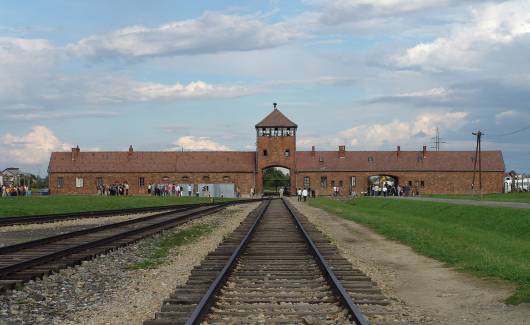
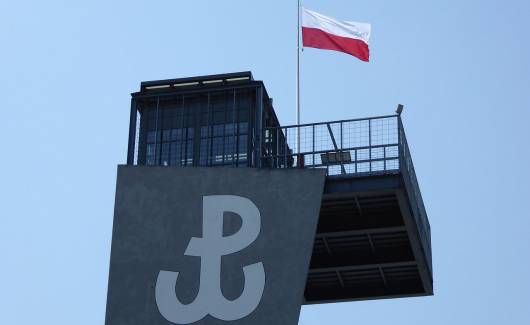
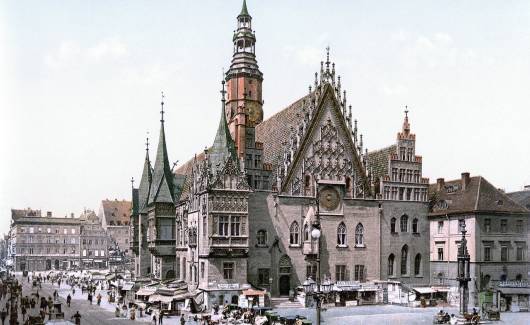
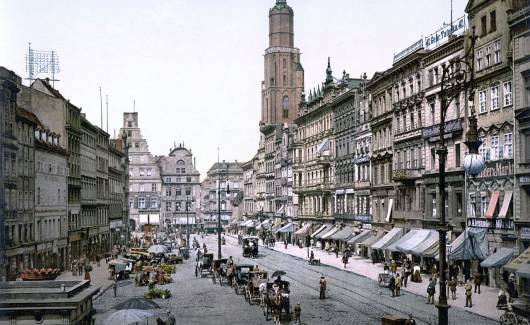
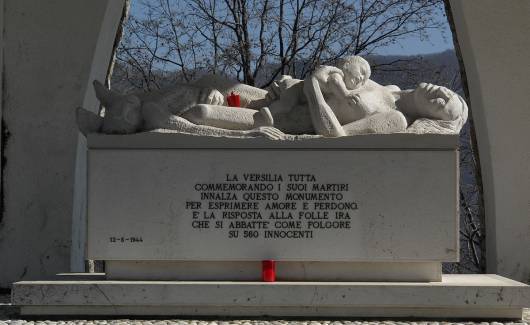
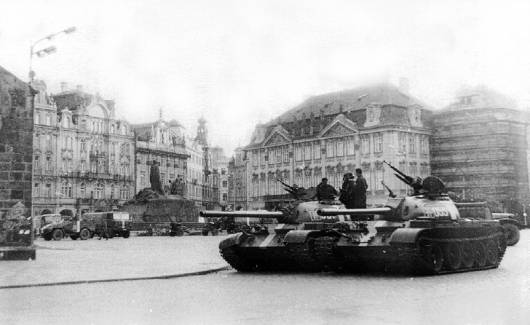
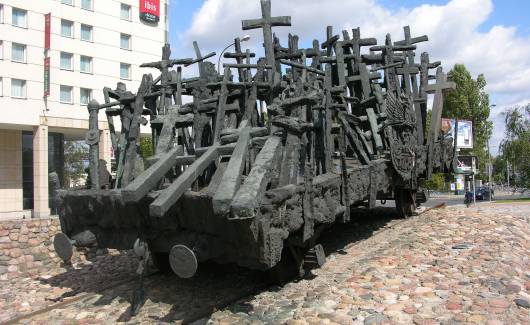
![Photo of the publication Verbindendes Gedächtnis im 20. Jahrhundert? Das „Europäische Netzwerk Erinnerung und Solidarität“ [...]](https://enrs.eu/media/cache/thumbnail_530_325/uploads/media/5bb343cee29bb-photo-commemorating-the-meeting-of-the-soviet-and-american-armies-2nd-lt-william-robertson-u-s-army-and-lt-alexander-silvashko-red-army.jpg)
